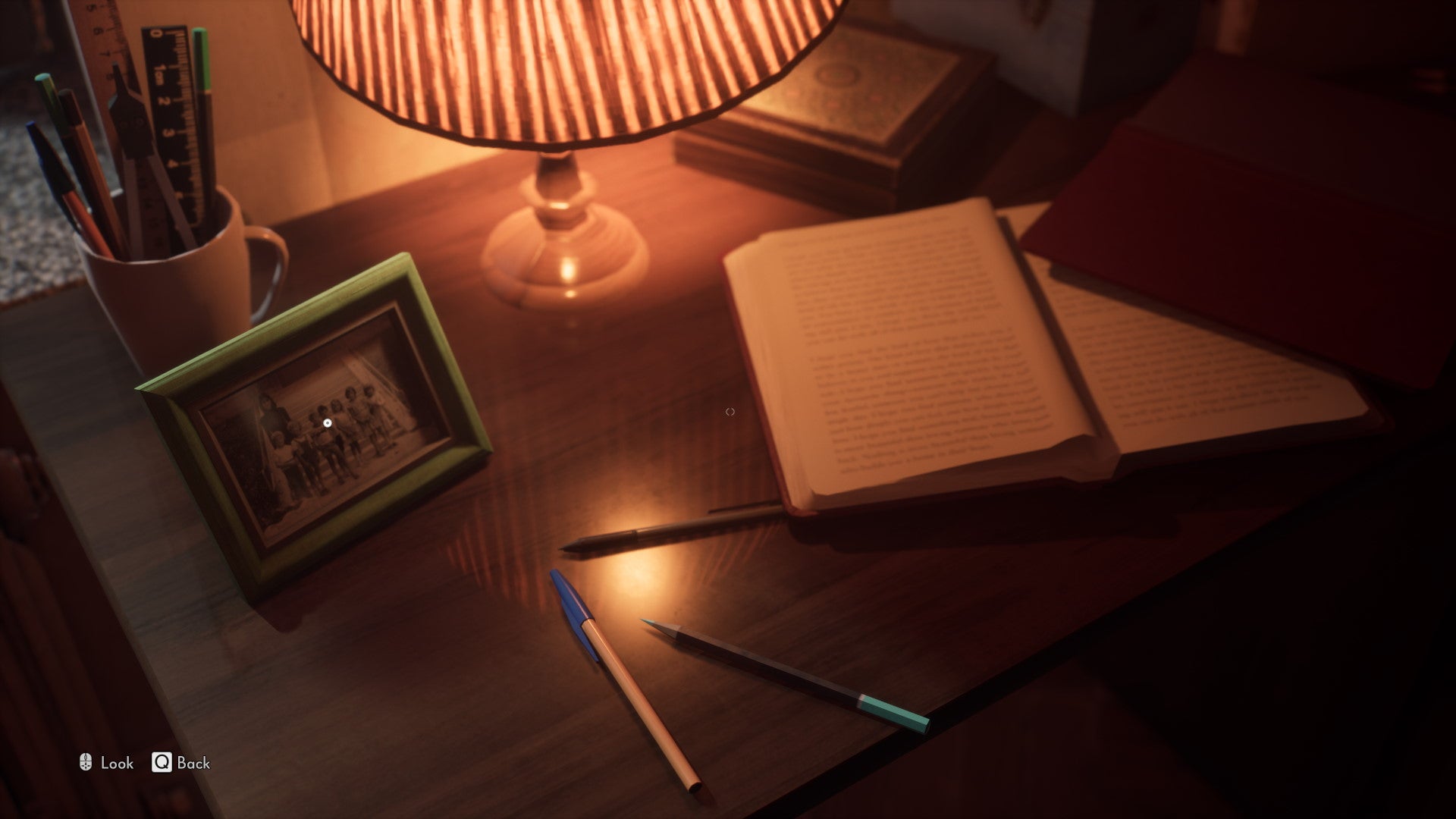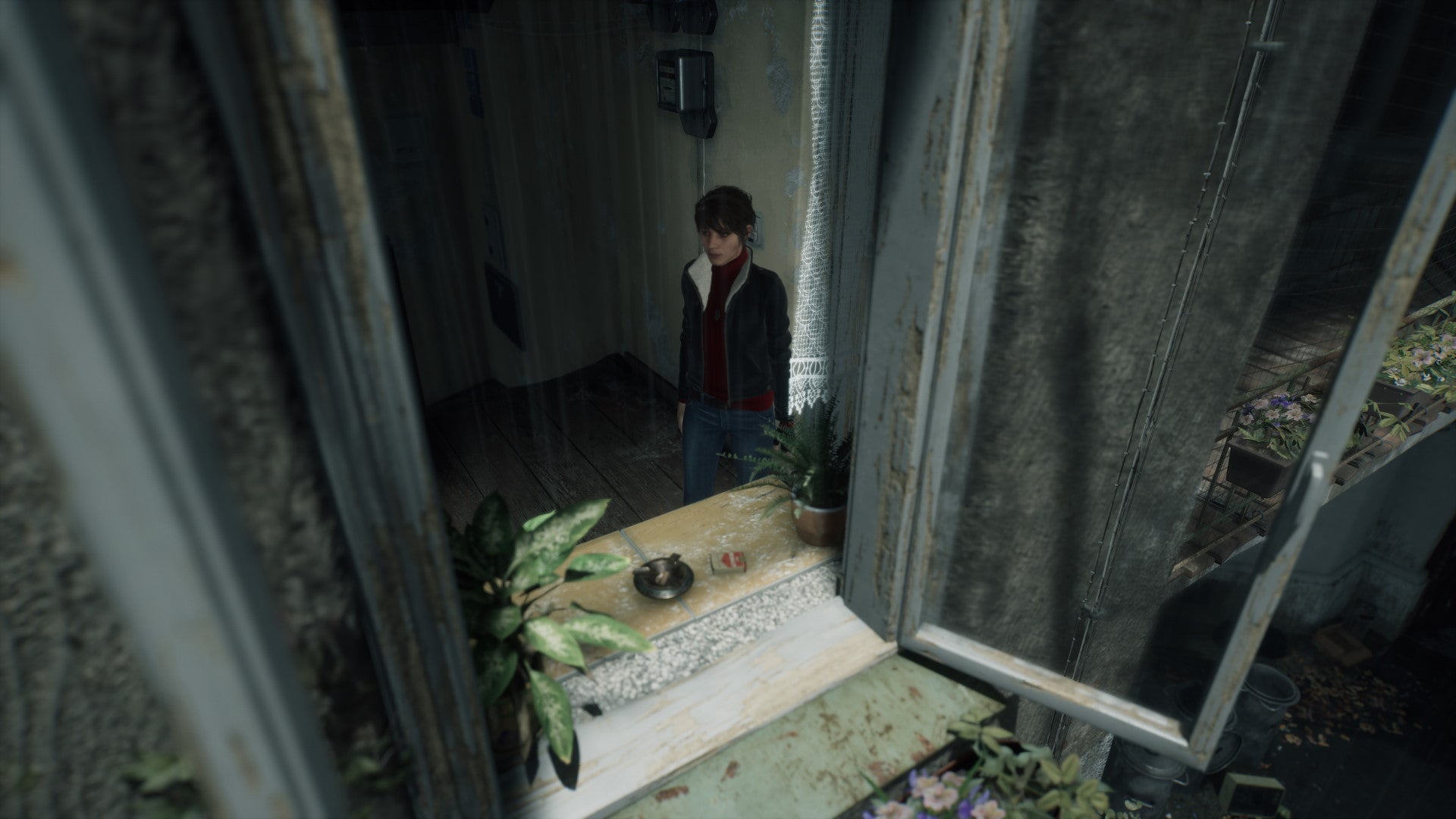Ray tracing, as we know, is still in its relatively early stages at the moment. While the number of ray tracing games continues to grow on PC, The Medium is still just one of a handful of titles you can play with it right now. It is, however, also one of the first proper ’next-gen’ games to get ray tracing support as well (at least over on consoles), and I had high hopes that it might give us our first glimpse of how future games might benefit from this fancy pants lighting technology. I must admit, though, I had to stare pretty hard at The Medium’s opening apartment / funeral home environment to really spot what its ray tracing effects were doing - if only because its moody, dimly lit corridors were so gosh-darned dark most of the time. Indeed, I think Bloober Team have missed a trick by not going in for ray traced shadows here as well, as the starkly lit rooms and harsh, overhead lighting could have made for some intensely atmospheric shadow effects. Lighting issues aside, though, there’s another reason why I was squinting hard into my screen over the course of my testing, and that’s because its menu settings don’t actually tell you what its ray tracing options are doing. You simply get Off, On and Ultra ray tracing settings in the game’s Display menu, with no explanation on how they differ. Instead, I had to go to Nvidia’s GeForce site to find out exactly what was going on. ‘On’, it would appear, enables the game’s ray traced reflections and ambient occlusion effects, while ‘Ultra’ adds in the game’s transparent ray tracing reflection effects. As you might expect, regular reflections gives realistic reflections on “all suitably reflective surfaces”, according to Nvidia, while ray traced ambient occlusion is all to do with the game’s soft lighting, helping to ground objects in a scene with more realistic shadow effects (but not full-on ray traced shadows like you get in Shadow Of The Tomb Raider, for example). Transparent ray traced reflections, on the other hand, allow characters, objects and their surrounding environments to be reflected on transparent surfaces, such as glass and windows - which you’d think would be covered by regular ray traced reflections, but apparently not. You still get ray traced reflections on mirrors and the like with regular ‘On’ ray tracing, but not on glass-covered picture frames or cabinets, for example. Case in point: in the images on the right (click to enlarge), you can see Marianne’s reflection in the glass front of the grandfather clock and the glass cabinet to her left on ‘Ultra’ ray tracing, but not when it’s just set to ‘On’. You can also see more accurate reflections on the framed butterflies on the wall with Ultra ray tracing, although I can’t say the overall effect really changes my wider perception of the scene very much. Some of the finer details of The Medium’s ray tracing do become more apparent when you shift into first-person, though, which you’ll do many times throughout the game as you examine walls and tables and other surfaces for objects and clues about your next objective. In these instances, reflections and the subtle shadow effects of the game’s ray traced ambient occlusion tech become much easier to see and appreciate. For instance, in the lamp-lit desk below, you can see there’s a vague patch of light where the bulb is meant to be shining on the table when ray tracing is switched off, but turn it on and the entire lamp is reflected back on the table’s surface. It’s quite a harsh, stark reflection, though, and to my eyes it actually looks slightly artificial. Unless Marianne’s dad has been regularly polishing this table to within an inch of its life, no wood surface should be that reflective. Bump the ray tracing up to Ultra, meanwhile, and the reflection becomes a lot softer and a bit more natural looking. The wood’s still unnaturally shiny, but hey, it’s a horror game, maybe things are meant to look off-kilter. However, it’s these close-up scenes that can also take a right hammering to your PC’s performance. Even with my monitor’s resolution set to just 1920x1080, my Nvidia RTX 3080 GPU struggled to maintain a consistent 60fps frame rate on High with Ultra ray tracing enabled in these first-person sections, sometimes dipping as low as 40fps in simple, empty rooms. Indeed, I noticed a couple of other particularly hairy spots when I was walking around in third-person as well. When the camera moves into the frame of an open window as you walk down the stairs from Marianne’s apartment, for example, my frame rate juddered all the way to sub-30fps. It was a real jolt from the 55-60fps speeds I’d seen up until that point in third-person, and the scene didn’t even look particularly ray tracing heavy, either. Upon further investigation via the medium (sorry) of poring over some screenshots, it would appear that it’s the transparent ray traced reflections that are the offending performance hogs here. It’s subtle (if only because the glass in the window is completely see-through), but there’s a definite increase in the number of shadows being reflected off the large window pane - which ends up occupying an inordinate amount of the screen because of the way the camera’s positioned. Whereas before the reflections were limited to tiny slivers of objects back in the apartment, you’ve now got practically two thirds of the scene all demanding the same heavy-duty ray tracing effects. And it’s just too much to handle. Fortunately, when I re-ran the scene again with just regular ‘On’ ray tracing, my frame rate remained at a locked 60fps. The same thing happened in the first-person sections, too. Without the transparent ray traced reflections getting in the way, everything ran perfectly smoothly. Not a single dropped frame in sight - as you’d jolly well expect from an RTX 3080. Still, it doesn’t exact bode well for lower-end ray tracing graphics cards, and my RTX 3060 Ti also encountered its fair share of frame rate drops. Without any ray tracing settings switched on at all, it managed around 50-55fps on High quality with its default TXAA anti-aliasing option enabled, which fell to around 40-55fps when I switched to ‘On’ ray tracing. ‘Ultra’, meanwhile, was pretty much out of the question, with my RTX 3060 Ti averaging just 35fps. Of course, The Medium also has Nvidia’s performance-boosting DLSS upscaling tech to help boost your frame rate in these sorts of situations. To enable DLSS, you have to dive into the Advanced menu of the Display settings tab, and manually select it from the clutch of anti-aliasing options before you can start fiddling about with it. Much like the game’s ray tracing settings, though, The Medium’s DLSS options suffer from a lack of proper explanation, and are merely described as ‘Low’, ‘Medium’ and ‘High’, without any indication of how they might affect your PC’s performance. Rather counterintuitively, ‘Low’ is actually the game’s version of Nvidia’s DLSS 2.0 Performance mode, which is what you’ll want to select to help raise your frame rate, while ‘High’ steps in for ‘Quality’. ‘Medium’, meanwhile, is the game’s version of ‘Balanced’, although why Bloober Team didn’t just stick with this established terminology in the first place is anyone’s guess. Normally, Balanced offers a pretty decent frame rate jump in other games that support DLSS 2.0, but at 1080p the bump I saw was pretty minimal. Walking past the transparent reflection-heavy window still saw my frame rate plummet to 28fps on my RTX 3080, and the first-person sections weren’t any smoother, either. Setting DLSS to ‘Low’ was a fraction better, but still not perfect. The first-person sections were much improved on the RTX 3080, remaining at a consistent 60fps, but the aforementioned window wobble still dipped to around 35-37fps in that problematic stairwell. In fairness, these wobble moments are few and far between and often only last for a couple of seconds as you move through the scene, but it’s still enough to break the sense of immersion that the game’s been striving so hard to recreate with all the realistic ray tracing gubbins. It’s a shame, and it makes you wonder what might have been possible had Bloober Team given us individual ray tracing options to play with instead of lumping them all together in just one pair of settings. Still, the main problem I have with The Medium’s ray tracing isn’t so much how it affects my PC’s frame rate; it’s the fact my eyes can barely register what it’s doing when I’m walking around in third-person - which, let’s not forget, is a pretty large chunk of the game. It’s too subtle for its own good half the time, and given how much of a performance hit you take even on high-end ray tracing-capable graphics cards (and with DLSS enabled for RTX owners), I’m just not sure it’s worth the hassle. I’d be tempted to switch it on if I knew DLSS could hoik my frame rate up to a solid 60fps at 1080p, but when the game’s default quality settings already do a stand-up good job making the game look dark and foreboding, I just don’t feel the need to start adding ray tracing to the mix. I’m not salivating over it like I was with Hitman 3, is what I’m saying, which I think you sort of need to be if you’re still on the fence about whether to upgrade to a new graphics card or not. But alas, just as The Medium fails to get the blood pumping on the old horror front, so too does it fail to excite on a graphical one. Here’s hoping 2021’s next big ray tracing game makes a bit more of an impression.









